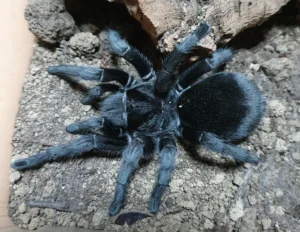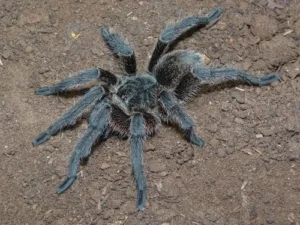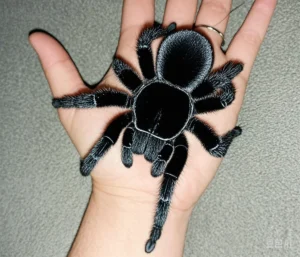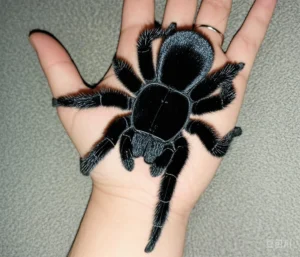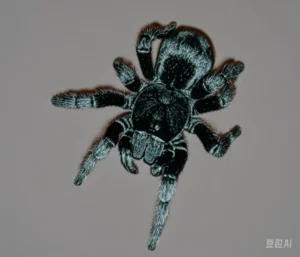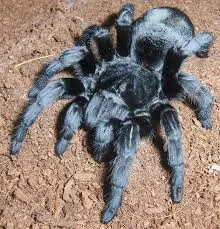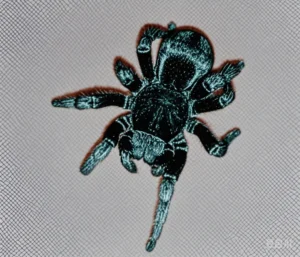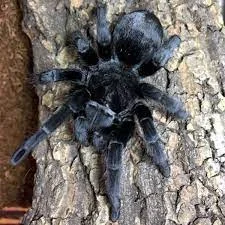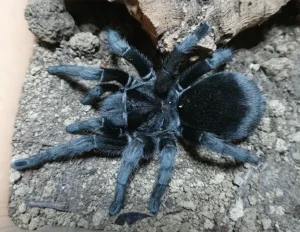Odor Detection in Grammostola pulchra: Chemoreception Through Setae
While tarantulas like Grammostola pulchra are often recognized for their sensitivity to vibrations and touch, their sense of “smell” or chemoreception plays a vital role in how they perceive their environment, find mates, and locate prey. This sense, however, operates differently than in mammals, relying heavily on specialized hairs called setae located primarily on their legs and pedipalps.
Chemoreception Basics
Chemoreception is the physiological process whereby organisms respond to chemical stimuli. In tarantulas, this involves detecting airborne or substrate-borne molecules. Unlike humans who have noses and mouths specialized for olfaction (smell) and gustation (taste), tarantulas utilize sensory structures distributed across their bodies.
Their primary chemosensory organs are microscopic pores and structures located on specialized setae (hairs). These structures allow chemical molecules to interact with nerve cells, sending signals to the tarantula’s simple nervous system.
Role of Setae
Many of the thousands of hairs covering a tarantula’s body serve sensory functions. Specific types of setae are adapted for chemoreception:
- Contact Chemoreceptors: These setae detect chemicals upon direct contact with a surface or object (akin to taste). They are abundant on the tips of the legs (tarsi) and pedipalps, allowing the tarantula to “taste” the ground or potential food items.
- Olfactory Chemoreceptors: These setae are sensitive to airborne chemicals (akin to smell). They help the tarantula detect pheromones released by potential mates or the scent trails of prey animals from a distance.
Research on arachnid sensory biology, such as work summarized by Foelix (2011), highlights the density and diversity of these sensory setae, particularly on the appendages that frequently interact with the environment.

Detecting Pheromones & Prey
Chemoreception is crucial for reproduction. Male tarantulas often follow silk trails laid down by females, detecting species-specific pheromones embedded in the silk or deposited on the substrate. This helps them locate receptive females, a critical step given their solitary nature.
Similarly, chemoreception aids in hunting. While vibrations often alert the tarantula to nearby movement, chemical cues might help differentiate between potential prey, non-food items, or even predators. The ability to assess these chemical signals is a key aspect of [tarantula sensory perception](https://www.lopehare.com/tarantula-medical-information/).

Implications for Husbandry
Understanding tarantula chemoreception has practical implications for keepers:
- Substrate Choice: While less critical than humidity or temperature, the substrate might retain certain chemical cues. Regular cleaning is important to prevent the buildup of waste odors that could potentially stress the animal.
- Introducing Mates: When attempting breeding, the male’s ability to detect the female’s pheromones is essential. Ensuring the female has had time to establish silk lines in the enclosure can facilitate recognition.
- Cleaning Agents: Avoid using strong chemical cleaners inside the enclosure, as harsh residues could interfere with the tarantula’s sensory perception or even be harmful.
While we may not fully grasp the complex chemical world a tarantula experiences, recognizing the importance of chemoreception via setae helps us appreciate another layer of their fascinating biology.
References:
- Foelix, R. F. (2011). *Biology of Spiders* (3rd ed.). Oxford University Press. (General concepts referenced)
- Wikipedia contributors. (Accessed 2023). Spider anatomy. *Wikipedia, The Free Encyclopedia*. https://en.wikipedia.org/wiki/Spider_anatomy#Sensory_organs


